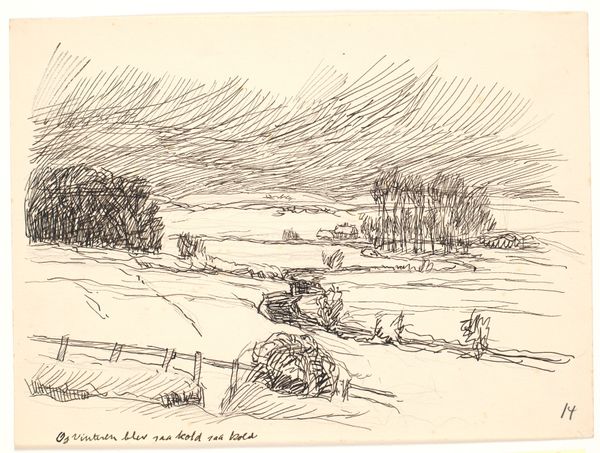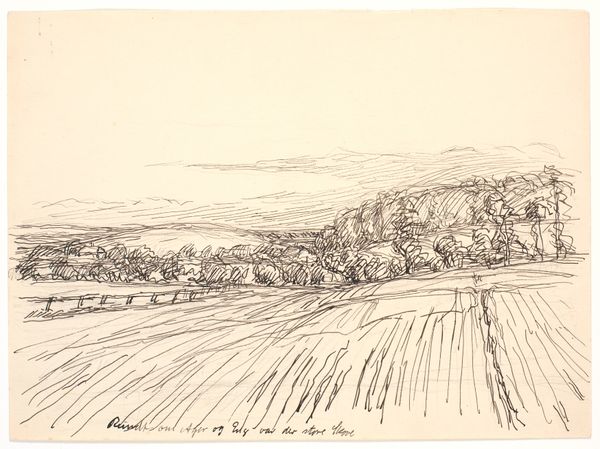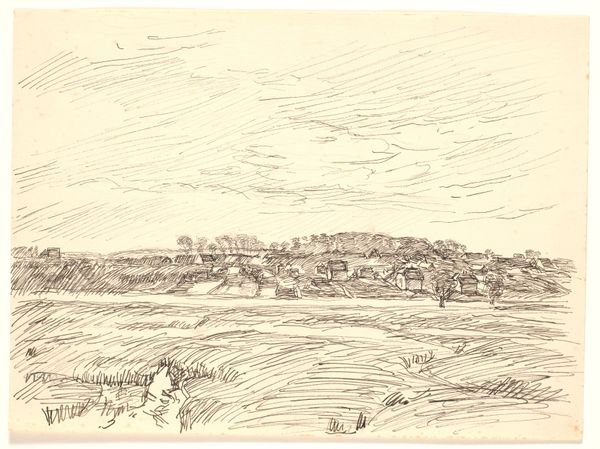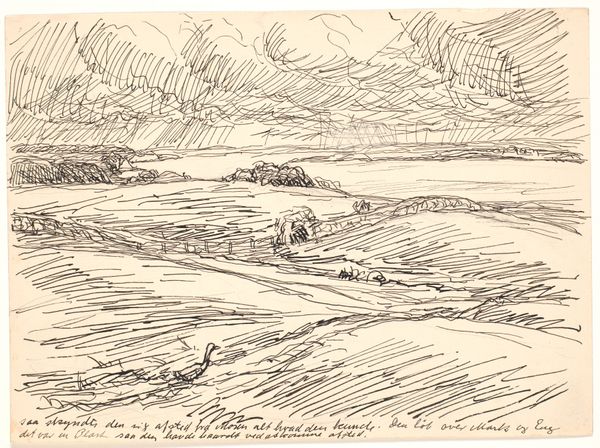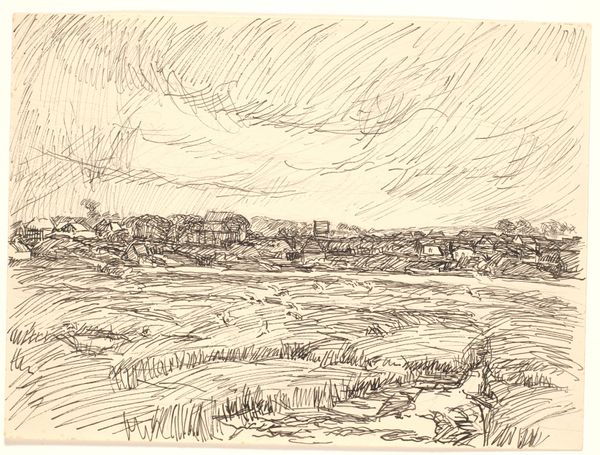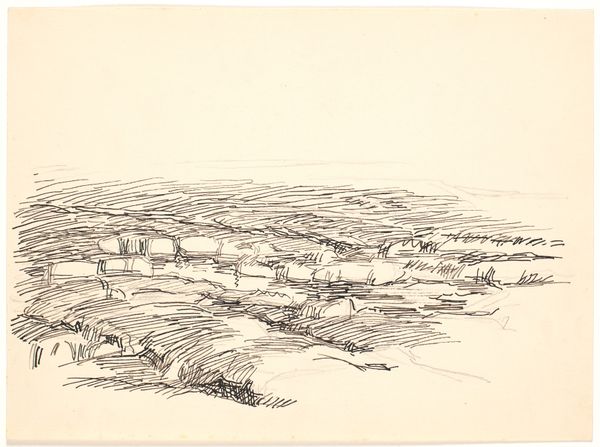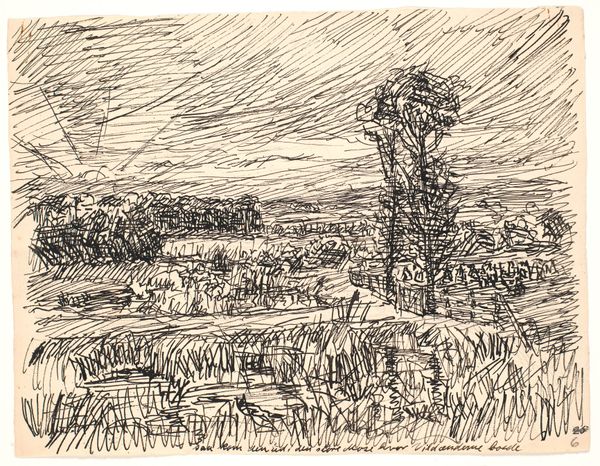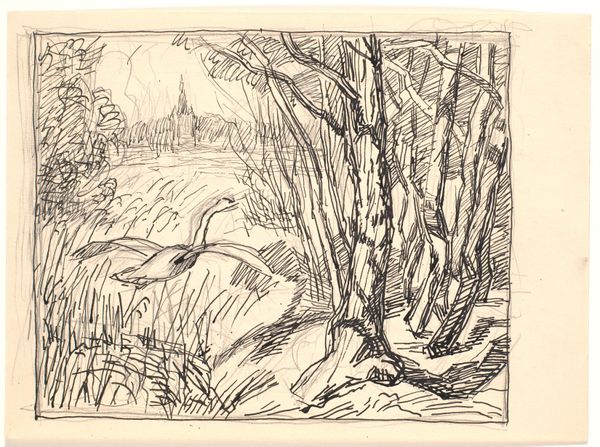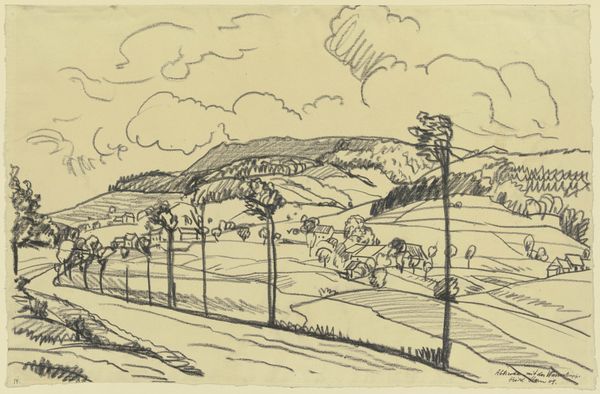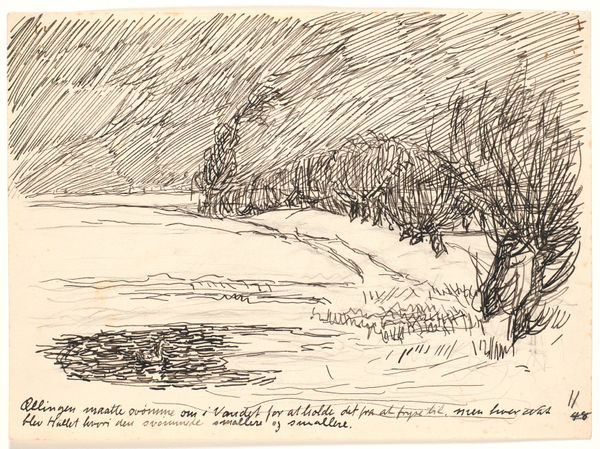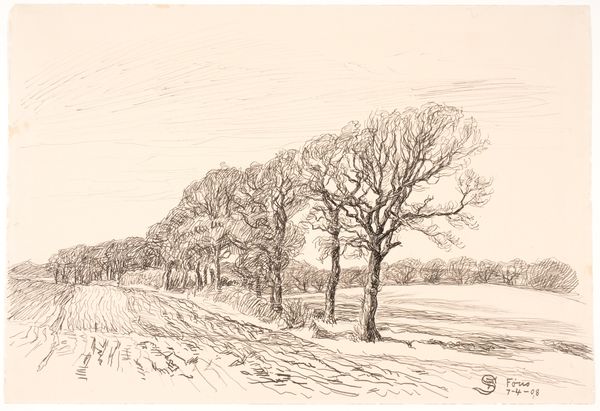
drawing, ink, pencil
#
landscape illustration sketch
#
drawing
#
ink drawing
#
pen illustration
#
pen sketch
#
landscape
#
ink line art
#
personal sketchbook
#
ink
#
ink drawing experimentation
#
pen-ink sketch
#
pencil
#
pen work
#
sketchbook drawing
#
realism
Dimensions: 254 mm (height) x 324 mm (width) (bladmaal)
Editor: Here we have Fritz Syberg's "Høet var rejst i Stakke nede i de grønne Enge" from 1928, a drawing in ink and pencil. It feels very immediate, almost like a snapshot, but the landscape is also subtly melancholic. What strikes you about this piece? Curator: It's interesting you pick up on the immediacy. Consider Syberg’s social position. He came from a humble background and often depicted rural life. This drawing, quick and unpolished, can be viewed as a direct, unromanticized depiction of agricultural labour and the working class’s relationship to the land. What does that raw quality evoke for you? Editor: I hadn't thought of it in terms of class. I suppose the sketch-like quality feels more authentic, less like a formal, idealized landscape. So, the starkness might reflect the realities of rural life. Curator: Exactly! And note how the landscape seems almost burdened, weighed down by the sky rendered with heavy lines. Do you think this contributes to that melancholic feeling you mentioned? How might that reflect Syberg’s own social anxieties or commentary on the period's agricultural challenges? Editor: It does add to that feeling of heaviness. Maybe it's a commentary on the struggle of the agricultural workers, a sense of the land itself being burdened by their labor and economic hardship? Curator: Precisely. Syberg provides a lens through which we can understand not just a scene, but also a set of social and economic relations. It urges us to confront the narratives of labour, land, and class. Editor: That's really insightful. I appreciate how you've placed it within a broader socio-economic context. I'll definitely look at landscapes differently from now on. Curator: And hopefully more critically, thinking about whose perspectives are often missing from traditional idyllic landscapes. The social and political realities shape the seemingly simple scenes we see.
Comments
No comments
Be the first to comment and join the conversation on the ultimate creative platform.
